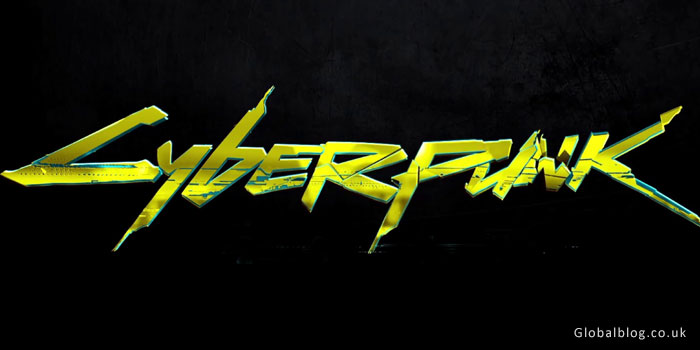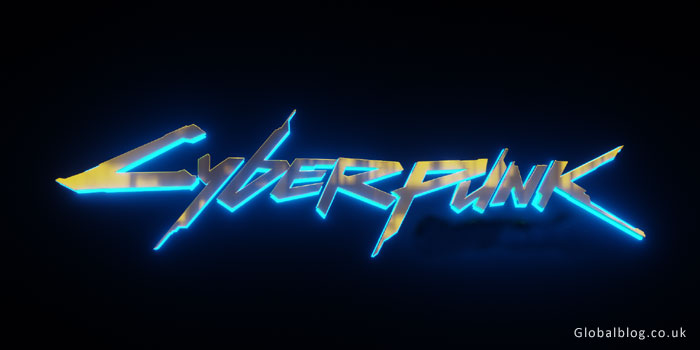Introduction to the Cyberpunk Genre
The neon-lit streets of dystopian cities, the hum of cybernetic enhancements, and an ever-evolving digital landscape—welcome to the world of cyberpunk. This genre has captivated audiences since its inception, blending technology with a gritty reality that feels all too familiar. At the heart of this vibrant universe lies one crucial symbol: the Cyberpunk logo. More than just a design, it embodies rebellion against authority and celebrates individuality in a high-tech society.
But what is it about this logo that resonates so deeply? From graphic novels to video games, it serves as a beacon for fans who crave both adventure and introspection. Join us as we delve into its storied history, explore its cultural significance, and discover how this emblem continues to shape our understanding of science fiction today.
The Origin of the Cyberpunk Logo
The Cyberpunk logo finds its roots in the 1980s. This was a time when technology began to intertwine with daily life. The genre emerged as a reflection of societal anxieties and hopes surrounding rapid advancements.
Originally, it featured sharp lines and neon colors, evoking images of dystopian futures. Graphic designers drew inspiration from Japanese anime and retro-futurism, creating an iconic aesthetic that resonated with audiences.
As literature evolved, so did the visual representation. Early works like William Gibson’s “Neuromancer” helped solidify the logo’s identity within cyberpunk culture. It became synonymous with rebellion against oppressive systems.
The design elements often included circuit patterns or glitch effects, symbolizing the fusion of humanity and machinery. This distinctive style captured not just a genre but also an ethos—one that challenged norms while embracing innovation.
Evolution and Influences of the Cyberpunk Logo
The Cyberpunk logo has undergone a fascinating transformation since its inception. Initially, it featured sharp angles and bold colors, reflecting the gritty urban landscapes characteristic of the genre. This design was heavily influenced by late 20th-century technology and aesthetics.
As digital art evolved, so did the logo’s complexity. It began to incorporate neon hues and glitch effects, embodying the chaotic fusion of humanity and machines that define cyberpunk culture.
Additionally, graphic designers drew inspiration from Japanese manga and anime, leading to stylized interpretations that appeal to various audiences. These influences helped create an iconic visual language.
The rise of video games further propelled the Cyberpunk logo into mainstream consciousness. Titles like “Cyberpunk 2077” have introduced fresh takes on this emblematic symbol while honoring its roots in dystopian narratives. Each iteration pushes boundaries and invites discussion about our relationship with technology.
Cultural Impact of the Cyberpunk Logo
The Cyberpunk logo has transcended mere branding. It represents a cultural movement, embodying rebellion against societal norms and technological domination.
This emblem resonates with artists, filmmakers, and writers who explore themes of dystopia and cybernetic futures. Its striking design often sparks conversations about identity in an increasingly digital world.
In fashion, the logo influences streetwear trends. Designers incorporate its aesthetics to evoke a sense of gritty futurism that attracts a diverse audience seeking alternative styles.
Moreover, the logo’s presence in gaming culture is undeniable. Titles like “Cyberpunk 2077” have propelled it into mainstream consciousness, blending virtual experiences with real-world implications.
From graffiti art to tattoos, enthusiasts proudly display this symbol as a badge of belonging to something greater—a community entrenched in imagination and innovation. The Cyberpunk logo continues to inspire new generations to explore the intersection of technology and humanity.

Famous Examples and Interpretations
The Cyberpunk Logo has seen diverse interpretations across various media. One of the most iconic examples is from the video game “Cyberpunk 2077.” Its neon-lit aesthetic captures the genre’s essence, blending dystopian themes with futuristic technology.
Another memorable representation appears in Ridley Scott’s “Blade Runner.” The logo encapsulates a gritty urban landscape, highlighting humanity’s struggle amidst technological advancement.
In literature, William Gibson’s works often feature striking visual elements that serve as unofficial logos for cyberpunk culture. These symbols evoke a sense of rebellion and innovation.
Graphic novels like “Transmetropolitan” also play a pivotal role in shaping perceptions of the Cyberpunk Logo. They fuse art and narrative to deliver powerful statements on society and technology.
Each interpretation adds layers to what the logo signifies within its universe while resonating with fans around the globe.
Controversies Surrounding the Cyberpunk Logo
The Cyberpunk logo has sparked debates over the years. Its striking design often leads to discussions about its appropriateness and cultural references. Some argue that it perpetuates stereotypes, particularly in representing futuristic urban societies.
Critics point out how the aesthetics might glamorize dystopian elements, glossing over social issues like inequality and corporate greed. Others feel it reflects genuine artistic expression, capturing a gritty reality that resonates with many fans.
Additionally, trademark disputes have surfaced regarding similar logos used by independent creators. This raises questions about originality versus homage within the art community.
Moreover, as cyberpunk evolves through various media forms—video games, films, literature—the logo’s interpretation differs wildly among subcultures. Each faction brings its perspective on what the emblem communicates about society’s future or past struggles.
The Future of the Cyberpunk Logo
The future of the Cyberpunk logo is a thrilling prospect. As technology advances, so do the designs that represent it. We might see more dynamic and interactive logos emerging, incorporating augmented reality elements.
With virtual spaces becoming increasingly popular, the Cyberpunk logo could evolve into a digital avatar of sorts. Imagine seeing it come to life in 3D environments or on social media platforms.
Artists and designers are likely to experiment with new styles inspired by AI and machine learning. This fusion can lead to innovative interpretations that challenge traditional aesthetics while staying true to cyberpunk’s essence.
As societal views shift toward digital identity, we may witness a deeper meaning behind the Cyberpunk logo—symbolizing rebellion against conformity and celebrating individuality in an ever-connected world. The possibilities are endless as creators continue to push boundaries within this vibrant genre.
Conclusion:
The Cyberpunk logo stands as a powerful symbol of an entire genre. It encapsulates the themes of technology, rebellion, and dystopia that are central to cyberpunk culture. From its early days rooted in literature to modern interpretations in film and gaming, this logo reflects a unique blend of creativity and critique.
With each passing year, the Cyberpunk logo remains more than just an image—it is a cultural artifact that invites discussion about our relationship with technology and society itself. As creators embrace this complex world, they ensure that the significance of the Cyberpunk logo endures for many years to come.
